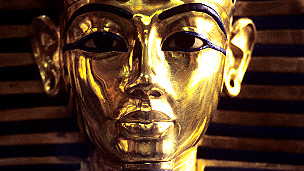Preserving the past 保存历史

Tutankhamun ruled Egypt from 1336 BC - 1327 BC
Vocabulary: History 词汇: 历史
What historical site impresses you the most? I've always been fascinated by the pyramids in Egypt. A few years ago I braved a long queue and climbed through a narrow passage to reach the main chamber deep inside one of them. Like millions of other tourists I marvelled at stoned-walled rooms full of the magic of this ancient civilisation.
But popularity might be the undoing of such archaeological treasures.
收听与下载
Take Tutankhamun's tomb in the Valley of the Kings, for example. It lay untouched for more than 3,000 years until the British archaeologist Howard Carter uncovered it in 1922. Now more than 1,000 people a day walk through it.
But as more and more people visit, the temperature and humidity inside the tomb change. As a result, the beautifully decorated plaster is coming away from the rock.
In order to preserve its heritage, a replica of the monument is being opened about 1km away from the actual burial site. Specialists have recorded every detail of Tutankhamun's tomb and used the data to recreate it.
Adam Lowe from the organisation behind the project, Factum Arte, says the copy is identical to the original. He believes visitors will want to "become part of the force that protects it rather than a force that is leading to its destruction", so won't mind seeing a replica.
But for historian Tom Holland, a copy is still a copy. He believes that although preservation is important, there is something unique about places like Tutankhamun's tomb.
He says it was built "by people who believed in the world of the spirits, the dead and the supernatural. You don't have to believe in a god or gods to feel a place is consecrated and has a particular quality that can't be reproduced."
What about you: would you visit a replica of a monument rather than the original to help preserve it?
Glossary 词汇表 (点击单词收听发音)
- historical site历史遗址
- pyramid金子塔
- to brave不怕(排场队)
- ancient古老的
- chamber屋子
- undoing毁灭
- archaeological treasure考古珍宝
- tomb墓穴
- untouched没有触动过的
- archaeologist考古学家
- to uncover发掘
- humidity湿度
- plaster石膏,灰泥
- heritage遗迹
- replica复制品
- burial site墓地遗址
- supernatural超自然的
- to consecrate使圣化